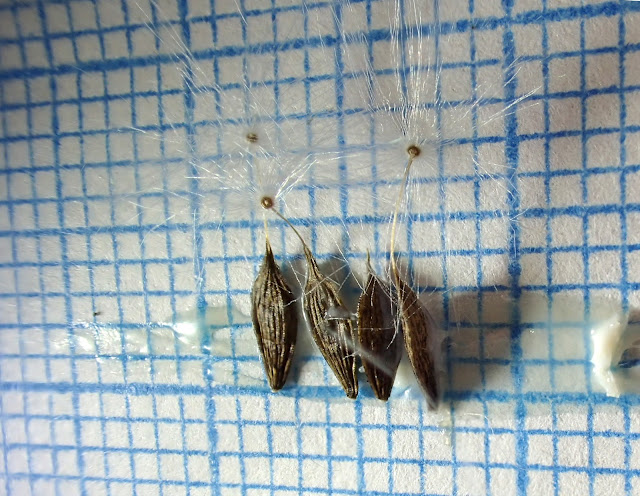I found this plant in August - a new one for our area (Langcliffe, Settle, Yorks Dales) - and was not sure if it was Prickly Lettuce Lactuca serriola or Great Lettuce Lactuca virosa. Both have spines on the midrib of the leaves.
Having put it on Twitter #wildflowerhour and elsewhere on social media (and having plumped for L virosa) I have now been informed
It is in fact L serriola - because "Virosa has obvious purple flushing in all parts but especially along stem and leaves. Serriola usually has whitish appearance."
I have now updated the rest of this post accordingly
----------
Since then the buildings (except one) have been pulled down and new buildings , tarmac and paving stones erected on the "waste land". These buildings are now called Langcliffe Quarry enterprise Site. The old footpath path amazingly close to the railway has been replaced by a new one a few meters back and a large grill now separates walkers from the old path and railway. New topsoil has been placed in the parts to be left as garden.
One new plant has arrived on these beds: (lots of old ones too, such as Broadleaved Dock, Spear and Creeping Thistle, various Oraches..)
I struggled to work out whether it was Great Lettuce Lactuca virosa or Prickly Lettuce Lactuca serriola. Indeed I struggled to find it with the flowers out at all - it always seemed closed in in bud and closed in fruit.
Then I realised it must be like many others in that tribe of Lactuceae /Cichoreae - Such as "Jack Go-to-bed-at-noon" - Tragopogon pratensis. - that it must go to bed at noon.
So on Tuesday morning 13 Sept I trotted out again - at 7.30am it was in shade - then back at 10.30am, and the blue sky and intense sun the tiny yellow inflorescences were open and just two heads were in seed.


I took one seed head home and measured the achenes
They were 4mm to 4.3mm long and very dark brown almost black. So I first made it L virosa. Some of the leaf stems had a hint of marron in them.
L serriola on the other hand is supposed to have achenes that are 3-4 mm long and are olive grey, and to have no hint of dark red in the leaves.
So L serriola it is
 |
| The involucral bracts open out in a quite spectacular fashion. |











No comments:
Post a Comment